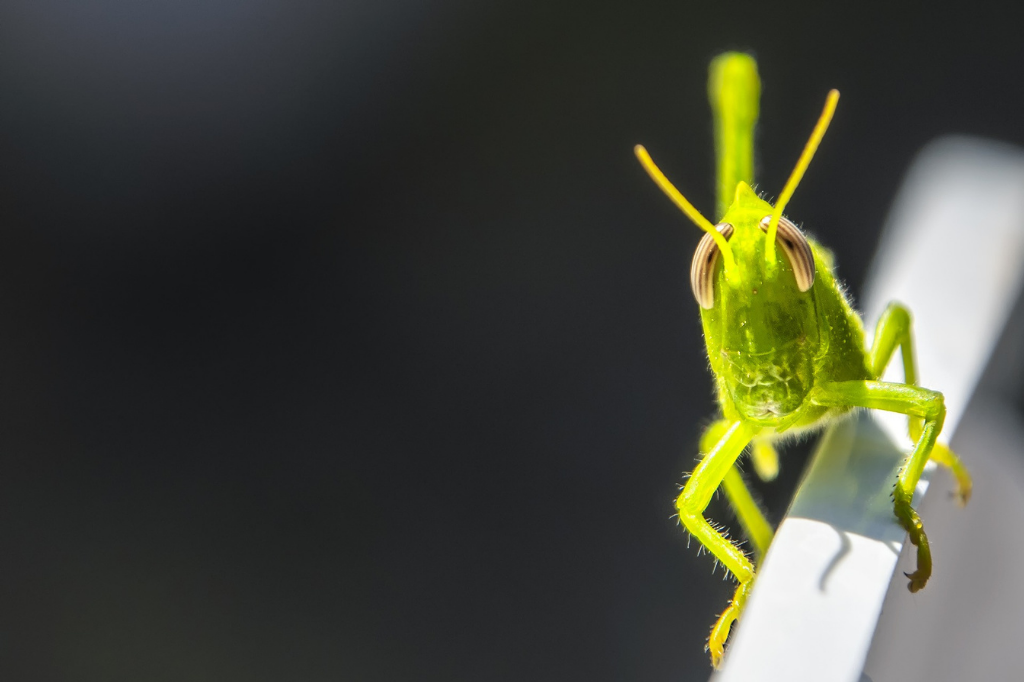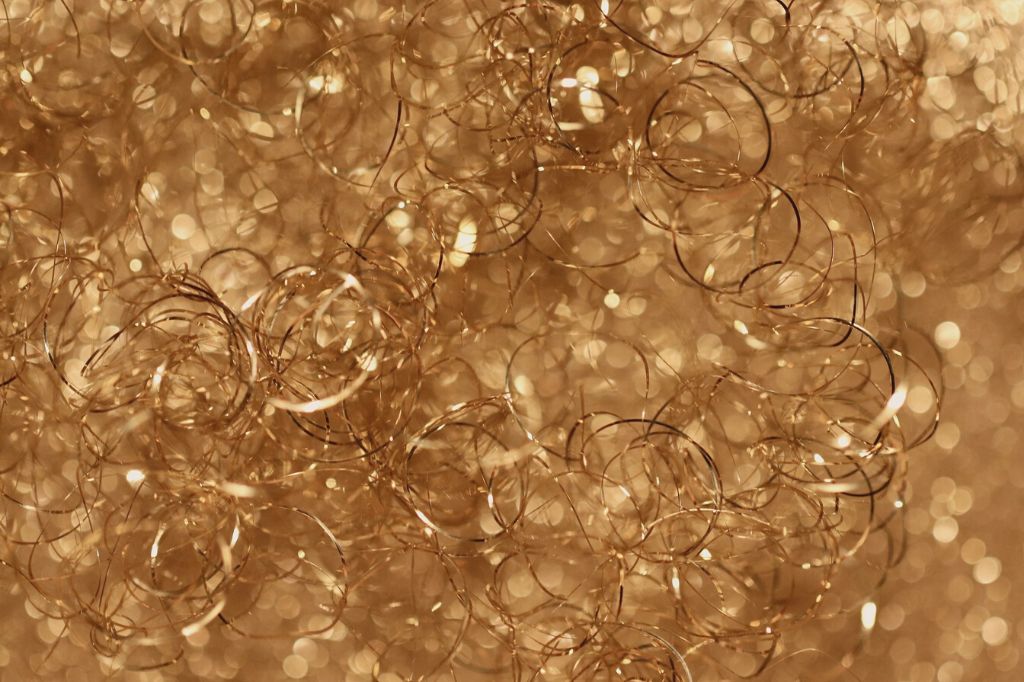The not-so-beneficial bugs that it’s a-okay for you to smoosh (or relocate)
When you first start out with gardening it can be overwhelming trying to figure out which bugs you do want and which bugs you don’t want.
To get you started here’s a list of five bad-for-you bugs that you do not want to see in your garden.
1. Tomato hornworm

The tomato hornworm is a big fan of the members of the nightshade family which (besides tomatoes) includes potatoes, eggplants, peppers, and tobacco. While these big ol’ boys look like they’d be hard to miss their green color allows them to blend in seamlessly with the foliage of your plants.
Tomato hornworms like to start at the top of the plant and work their way down so keep an eye out for chewed or missing leaves up top. Tomato hornworms eventually grow into tomato hornworm moths.
To get rid of tomato hornworms you can pluck them off of your plant and smoosh them (or throw them on the sidewalk and hope a bird eats them).
The tomato hornworm and its’ grown-up moth form are a food source for birds, bats, and toads. Encouraging their natural predators to move in can be a great way to keep these pests at bay!
2. Aphids

Aphids are squishy little guys that breed prolifically but are easy enough to get rid of if you spot them early. Aphids feed by sucking the nutrient-rich liquids out of plants like little plant vampires.
To spot an aphid issue in your garden keep an eye out for curling, misshapen, or yellowing leaves. Aphids can also leave behind a sticky substance on leaves which encourages ants and mold growth.
Luckily aphids don’t require a stake through the heart to be killed.
Aphids are a favorite food for ladybugs, soldier beetles, midges, and lacewings. They can also be gotten rid of by spraying them with a very weak mixture of soapy water.
Sometimes even just a good blast with the hose is enough!
3. Spiders

Images from Wikimedia Commons
First things first, spiders are not bugs they’re arachnids. If there are any entomologists or arachnologists reading my post – I apologize.
There are around 3,500 different kinds of spiders in the United States and of those only 2 are dangerous to people. The two spiders to watch out for in the US are the brown recluse and the black widow.
While neither of these spiders is particularly bad for your vegetable garden if you’re going to be getting down and dirty around your yard it’s not a bad idea to know which spiders to avoid.
(Especially if you’re gardening with kids).
Brown Recluse
Also known as ‘fiddle backs’ due to the small fiddle-shaped marking on their backs brown recluse spiders are one of many small brown spiders in the world.
When living outdoors they can be found in woodpiles or around areas of debris, when indoors they favor cardboard and small dark spaces.
Brown recluses lay eggs primarily from May to June and where you find one you will likely find many.
Their bites can produce open ulcerating sores but they are very very rarely fatal.
Black widow
While the black widow is known for its bulbous black shape and distinct red marking these traits are actually reserved for females of the species.
When living outdoors they are often found in woodpiles or in dry, dark areas such as the eaves of buildings.
Unlike the brown recluse, black widows are extremely territorial, and where you find one you are unlikely to find more.
The bite of a black widow is most dangerous to small children and the elderly but is rarely fatal to adults.
If you are bitten by a spider it’s a good idea to get in touch with a medical professional for an evaluation.
I recommend always wearing gardening gloves to limit the chances of being bitten when moving things around outside.
4. Squash Bug

Squash bugs are sneaky boys that look very similar to soldier bugs. While soldier bugs are a beneficial predatory stinkbug, squash bugs are just a pest.
There’s some comfort in the fact that squash bugs offer little threat to larger plants in the late summer or early fall – but that does mean that early prevention is key.
Ideally, you want to catch squash bugs before they grow into adults as the younger bugs are easier to smoosh. They can be picked off the leaves of your plants as nymphs and dropped into a bucket of soapy water to drown or you can scrape the egg clusters off the leaves with a butter knife. (Beetles will happily eat them off the ground).
Squash bug eggs mature in 10 days so be sure to check at least once a week. If you want to sneak back at the beetles you can place a plank of wood outside on the ground near your plants and in the morning you’ll find all of the adults congregating under it.
Optimum smoosh-ability.
If you want to have squash and melon in the fall it’s a good habit to go out and check for these guys every day. (A fun task for a helpful toddler can be checking under all the leaves).
Adult squash bugs are almost impossible to get rid of with pesticides so early detection and prevention is the way to go. Nasturtium is a great companion plant to help deter these pesky pests.
5. May-June Beetles & Larvae

Images from Wikimedia Commons
May-June bugs are members of the scarab family that are absolutely everywhere in Oklahoma during the summer months. They aren’t dangerous whatsoever and they are only threatening to your garden if you have a whole lot of them.
In fact, their only real issue is that they are kind of irritating. Which isn’t enough reason to include them on this list when there are other, worse, beetles to watch out for in your garden.
I included them because of their grub form.
If you’ve ever done any digging in Oklahoma you’ve seen these grubs before and if you’re anything like me you looked at it, thought ‘is this a good bug or a bad bug’ and then immediately forgot to look it up.
Well, today’s the day, the results are in – if you find these grubs in your garden bed when you’re weeding you can pull them out and toss ’em in the yard for the birds to snack on later.
They are not a beneficial bug.
You don’t need to mount a one-man war against your May-June bugs (save that energy for the squash bug) but if you dig one up by accident it’s a-okay to toss ’em.
These guys are great snacks for many other things in the garden.
Honorary Mention: Slugs & Snails

Images from Wikimedia Commons
Another not-bug addition to the bad bug list – slugs and snails are members of the mollusk family tree.
Snails and slugs can be transmitters of diseases but the bigger threat is that they seem to have perfect timing for taking bites out of ripe produce right before you go to pick it!
To repel slugs and snails from your garden you can place shallow dishes of beer around the affected area, douse them in cold coffee, or spray them with a mixture of water and grain alcohol.
If you’re interested in a passive and organic way to prevent snails and slugs you can encourage some of their natural predators to move into your garden. Snakes, turtles, frogs, toads, and birds all love a good mollusk treat.
What do you think?
Did I forget any pests that you think needed to be on a top 5 list? Which of these bugs have you had trouble with before?
Comment below and let me know!
To find out more about some beneficial bugs check out my post 5 Bugs You Do Want








